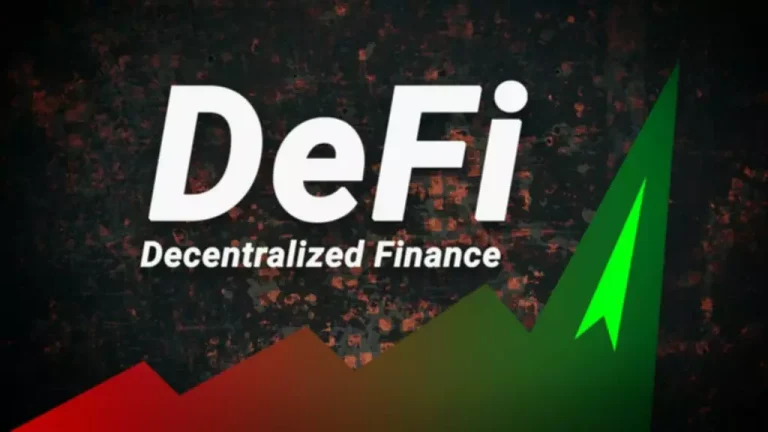It can value as much as $40,000 to $300,000 with a time-frame from three to 9+ months. » The best method to create a blockchain network is to use a pre-built blockchain from open supply like Ethereum, Fabric, EOS Cardano, and so forth. Using these pre-built blockchains you don’t have to public and private blockchain deal with a core engine that is troublesome to implement. Insurance firms like medical insurance corporations or car insurance coverage might collect some essential data concerning the user. Private blockchains facilitate automated claims processing and also enhance knowledge accuracy with safety and fraud detection.

Digital Transformation: Platform Strategies For Fulfillment
With a permissioned blockchain, the extent of data sharing may be managed. With the consent of parents, the sensitive data could be exchanged for further health-related needs of the child. Private blockchains are used for various companies within the monetary sectors, such as across-the-border funds, trade finance, and settlement methods. The blockchains provide sooner transaction speeds, decrease costs, and increased transparency compared to old financial systems. Private blockchains are sooner and can process a excessive variety of transactions per second because they allow a limited variety of participants within the non-public blockchain community.
What Factors Must Be Thought Of When Choosing A Blockchain Expertise For Finance Applications?
Since there are limited nodes that have permission and entry to the ledger, a private blockchain is almost always efficient. The non-public blockchain is permissioned and restricted to a limited variety of nodes, or somewhat, to specific curiosity groups. It is utilized in enterprise or organisational environments that advocate restricted knowledge sharing.
Personal Blockchain Development Providers
Additionally, the transparency and openness of public blockchains are unparalleled, offering each node transparent entry to the ledger, a major think about blockchain functions in finance. It offers solutions to varied problems like data security, transparency, and so forth. Well, it all started in 2008 when Bitcoin, the primary decentralized cryptocurrency, launched.
Prime 4 Kinds Of Blockchain: Revolutionizing The Finance Industry
A public blockchain can discover its applications helpful in public sectors like healthcare and education. Healthcare industries can use blockchain to have a historic retailer of all their operations. The information may be added by doctors and medical professionals like the cost of therapy, sufferers details, and prognosis. Though the info can be seen by everybody, the info cannot be modified. Public blockchain network examples include Bitcoin, Ethereum, and Litecoin, open to anybody for participation and involve transparency in transactions. Consortium blockchains suffer from a better degree of centralisation than public blockchains.
Introduction To Hyperledger Cloth And Public Blockchains
These ‘members’ are typically organizations that need to use the blockchain for inner purposes, like managing their supply chain or tracking stock. The integrity of the personal blockchain is determined by the standing of the approved individuals. It is necessary to belief each other since they are those who’re alleged to confirm and validate the transactions. Actors outside this personal blockchain should, therefore, trust these members on the network, once they don’t have any risk of control over the verification of the information transferred there. With fewer individuals, it’s much simpler for a hacker to take management of the network and manipulate the data on it and corrupt the blockchain system. The purpose of the blockchain considerably failed by way of this system; the whole concept was to have a decentralised ledger and be able to not have control of power in one (or a few) hands.
Digital Transformation In Healthcare: Innovation, Strategies & Processes
- With the massive scale of nodes participating within the blockchain network, extra vitality is needed.
- They are utilized in industries where many organizations need to collaborate and share information.
- It supplies verifiable and tamper-proof knowledge that prevents data breaches and cyber-attacks.
- Blockchain is a distributed ledger expertise that permits secure and transparent transactions with out the need for intermediaries.
- Blockchain expertise has created lots of buzz in many industries such as banking, finance, healthcare, supply chain administration, and extra.
- Insurance firms like medical well being insurance corporations or vehicle insurance coverage may acquire some crucial knowledge in regards to the person.
The knowledge is available on the common public network, and anyone can read, edit or write data in this blockchain network. So, the community nodes could have indeniable proof to show the manipulation. High vitality consumption, scalability, and a decrease throughput are the drawbacks of the public blockchain network.

A. Private blockchains supply more control to a specific group of members and might provide faster transaction processing. However, their centralization can lead to potential points of vulnerability. A personal blockchain is a blockchain community where access is restricted to a particular group of individuals or entities. This is often used by organizations requiring higher network and information privateness control. Despite this, you proceed to require a consensus mechanism in a non-public blockchain to validate transactions.
It implies that, as quickly as the vaccination information is entered, it’s unalterable. Private blockchain continues to be a creating technology with no regulation. You can go for a personal blockchain growth company should you don’t need to study everything and create a non-public weblog.

The centralization is on the core of private blockchains which is among the many most significant security dangers. For security reasons, personal blockchains keep the data for approved participants solely. It presents a high degree of privateness for any business and this is certainly one of the primary reasons for companies to implement blockchain know-how. Usually, business organizations use non-public blockchains to communicate knowledge and knowledge to a focused audience whereas constructing network control.
A public blockchain is an open community that does not require any permissions. Anyone is allowed to affix the server, read, write or take part throughout the blockchain community. It is a decentralized type of network and no single entity controls the community. Security of the info saved on public blockchain networks is maintained as the info is unalterable once it has been recorded within the ledger. There usually are not many individuals on the network, the entry is proscribed and therefore there are greater possibilities of reaching a consensus faster and in an environment friendly method. A personal blockchain can course of a higher variety of transactions in real-time as compared to public blockchains.
Also, hack or virus assaults are out of the query — which is what public Blockchains concern the most. Since a public Blockchain is, by definition, seen to everybody, anybody can access the data stored in your network. Even in case your private knowledge in transactions is encrypted, a motivated actor could get hold of lots of information about the parties involved in a given transaction from metadata or inference. You should think about the elements listed beneath while selecting a blockchain community for your corporation. Consortium blockchains depend on belief among the many participating organizations. This can be problematic in follow, as many competitors might not want to operate transparently.

A public blockchain community offers transparency and decentralisation, making it suitable for functions corresponding to cryptocurrency and open monetary techniques. Different forms of blockchains offer distinctive advantages and drawbacks relying on the specific requirements of an application or industry. Understanding the strengths and limitations of each blockchain is essential for organisations and builders.
Hyperledger, Ethereum Enterprise and R3 Corda are a few of the personal blockchains. The use cases embrace verification of property, provide chain management, financial companies, healthcare, government providers, retail, insurance, actual property etc. With the massive scale of nodes collaborating within the blockchain community, more power is needed. So considering the time consumption and resource wastage, it isn’t economically feasible. If the knowledge is delicate, permissioned networks like private blockchains may be adopted. The public blockchain is a permissionless blockchain, and any node can access the network.
A non-public blockchain is mostly used by organisations that need to benefit from blockchain expertise however don’t want to expose their community to the public. This programme supplies learners with a high-level understanding of Web 3.zero. Learners will gain data about the building block of Web 3.zero i.e., blockchain. The programme aims to demystify blockchain expertise, cryptocurrencies, decentralized finance (DeFi), decentralized autonomous organizations (DAOs), non-fungible tokens (NFTs), and the metaverse. It aims to equip learners with the knowledge and expertise necessary to navigate and take part within the rising Web3.0 ecosystem.
Read more about https://www.xcritical.in/ here.
